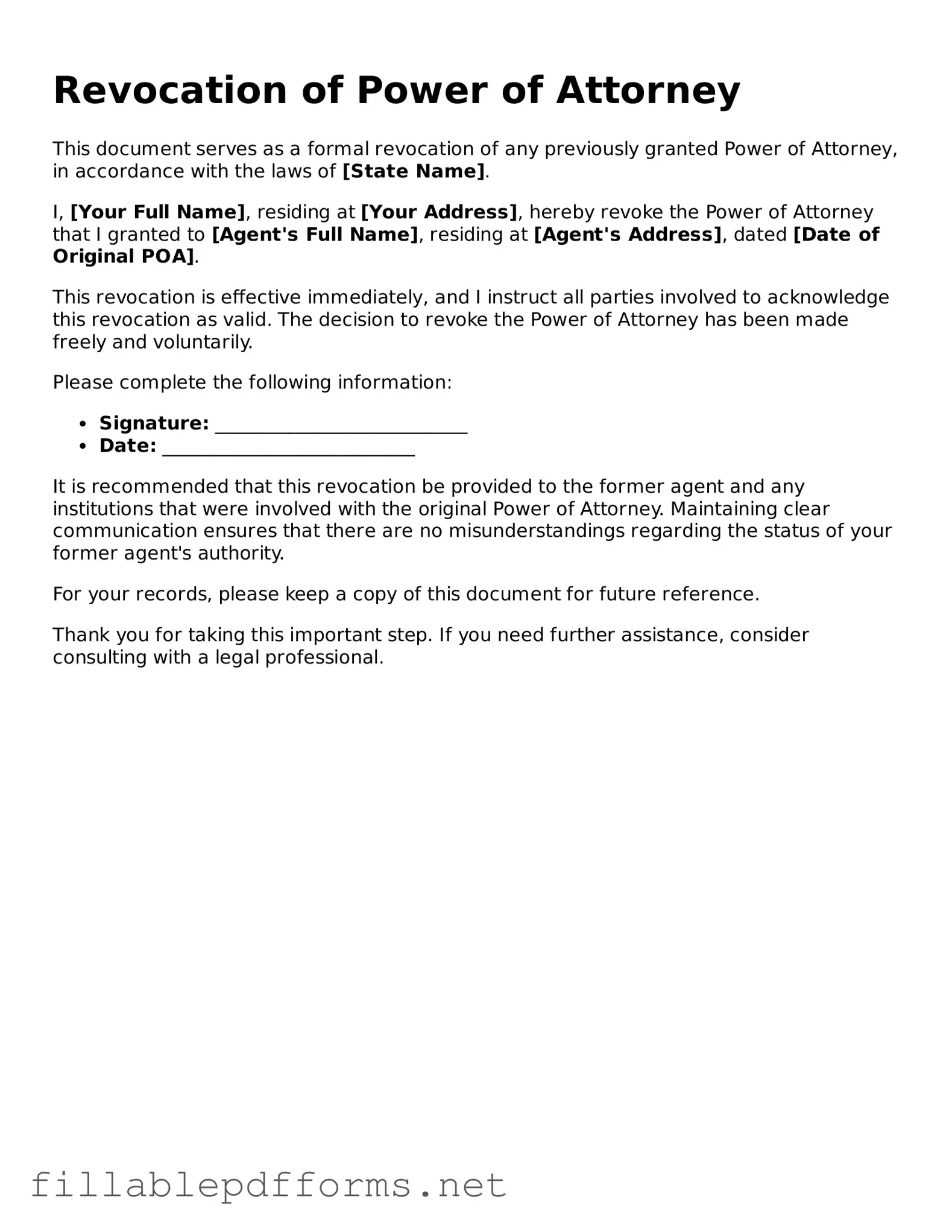The Revocation of Power of Attorney form serves as a crucial document for individuals seeking to terminate a previously granted authority to another person or entity. This form is essential when a principal decides to withdraw the powers they have bestowed upon an agent, whether due to a change in circumstances, loss of trust, or simply the completion of the intended purpose. It outlines the specific details regarding the original power of attorney, including the names of the principal and agent, the date the original document was executed, and any pertinent references to the powers being revoked. By completing this form, the principal ensures that the agent no longer has the legal authority to act on their behalf, thus safeguarding their interests. Additionally, it is important to notify the agent and any relevant third parties of the revocation to prevent any unauthorized actions. Proper execution of the form, including signatures and dates, reinforces its validity and effectiveness, making it a vital tool in personal and financial management.
